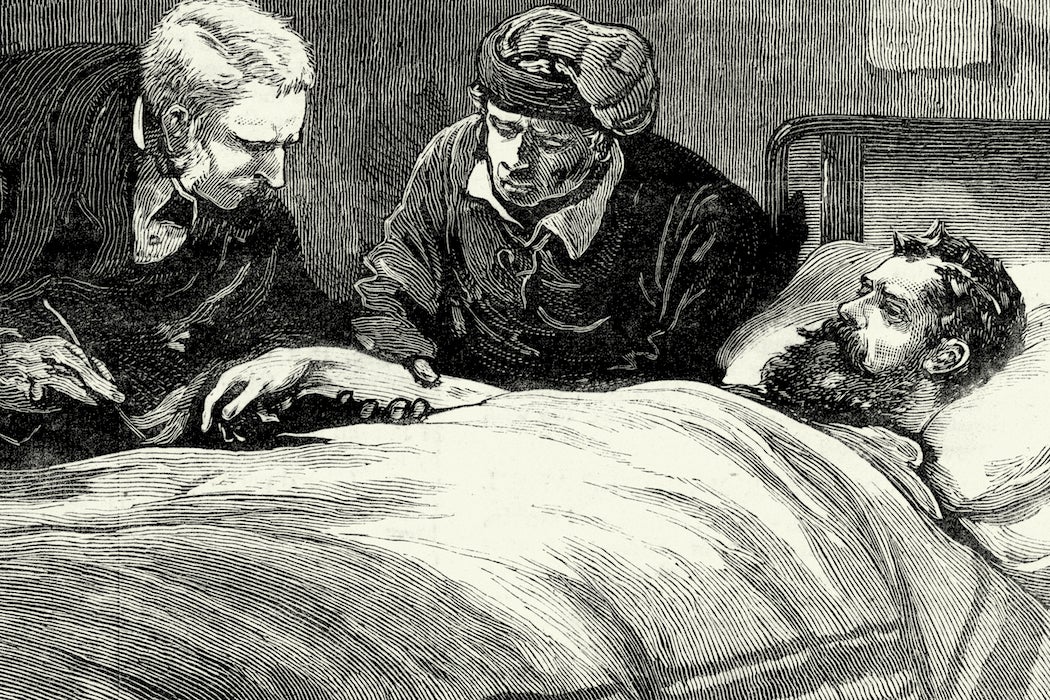It’s better to do something than admit that you know nothing. This was a common sentiment in the early history of psychiatry, illustrated by the popularity of a little-remembered treatment called insulin coma therapy.
It was the frontline treatment for schizophrenia from the 1930s until the 1960s. According to the medical staff at the Bronx Veteran’s Administration Hospital, writing about their treatment regime in 1960, insulin coma therapy was thought to relieve symptoms including “anxiety, tension, fear, irritability, hostility, elation, paranoid projections, obsessive and compulsive thinking, delusions, and hallucinations.”
Like electroshock therapy, insulin coma therapy was an example of the medical approach to psychiatry that regarded mental illness as a primarily biological ailment. But while electroshock (or electroconvulsive) therapy has been shown to help people who haven’t responded to other treatments, there was never any serious evidence that insulin coma therapy had any effect on patients whatsoever.
Developed by psychiatrist Manfred Sakel in the 1920s, insulin coma therapy was based on the premise that patients could be “jolted” out of an episode of mental illness. The therapy itself took place over a number of weeks or months, with patients daily receiving insulin injections that induced a coma-like state persisting for an hour or so before it was reversed by supervising hospital staff with an injection of glucose. The insulin dosage was increased every day, inducing increasingly deeper states of unconsciousness until doctors decided the patient was at “maximum benefit,” at which point they would be tapered off the insulin. This process was repeated again and again until the patient had experienced anywhere from 30-50 of these comas. The doctors from the Bronx V.A. reported that patients waking from an insulin-induced coma “Display deep confidence in the staff…They frequently express ‘a feeling of being reborn.’” Common side effects, however, included obesity, brain damage, and sometimes death; modern research on the era says that the fatality rate was around 1%, and patients also risked permanent brain damage.
Get Our Newsletter
Insulin coma therapy went out of vogue with the introduction of antipsychotics in the 1960s. By that time, it had also been largely discredited and was on its way to being relegated to an embarrassing blip in the history of psychiatry.
But there were still some doctors who did not let go of the idea that one could sleep their way to a cure. According to BMJ, the most infamous of these believers was an Australian, Dr. Harry Bailey, who worked at a private psychiatric hospital outside of Sydney. For nearly two decades Bailey and his protegees Drs. John Herron, Ian Gardiner, and John Gill were the leading “experts” in the use of deep sleep therapy, which used large doses of tranquilizers and barbiturates to put patients under heavy sedation for days at a time. The practice was exposed when it was revealed in the mid-1980’s that twenty-four patients had died in their care and that Bailey had doctored many of the death certificates to avoid arousing suspicion. A flurry of legal proceeding followed, but Baily committed suicide before answering to criminal charges. The three doctors who worked with Bailey escaped punishment by the Australian medical board and were allowed to continue practicing.







